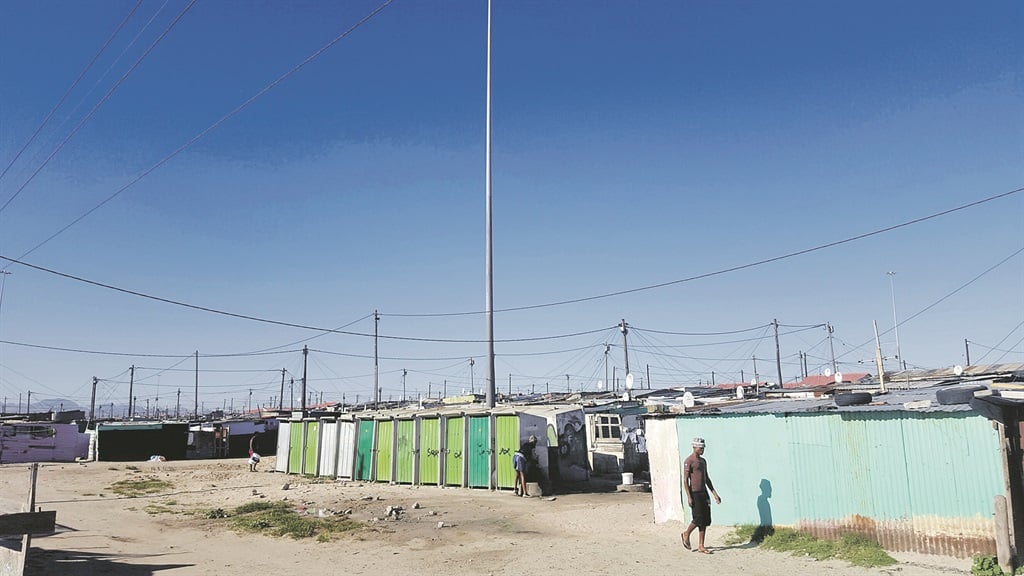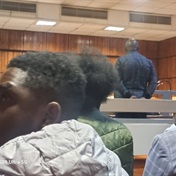
Around the country, sanitation has municipalities scratching their heads on how to provide and maintain decent toilets in informal settlements
Sanitation is not as simple as providing a toilet and “letting it be”.
Dr Lina Taing, who researched the implementation of sanitation in informal settlements for her doctoral thesis, explains: “A toilet needs to be maintained. That ties into how people use the resource. If the toilet is dirty, people tend to treat it as such – by not looking after things.”
In some cases, there is a disconnect between policy and practice in informal settlements. The City of Cape Town’s janitorial service for communal flush toilets was a response to such a disconnect, says Taing.
National policy determined that users had to look after anything above ground while municipalities were responsible for infrastructure below ground.
“Things have changed a lot over the past few years. Especially at a local level: municipalities recognised that expecting users to look after everything above ground was not feasible. And the main reason is that, especially in informal settlements, people were not using systems as [policymakers and implementers] thought they would.”
An example of the use of sanitation contrary to expectations is the disposal of solid waste.
Says Taing: “Sometimes they find things like kitchen waste and rubbish [in the sewer system].
“But when you look at it from a resident’s perspective, what are you supposed to do with that waste if the resources in place are insufficient to deal with that?”
An underlying problem in the provision of sanitation in informal settlements is that communal flush toilets require a different management plan from toilets provided on a 1:1 basis in formal areas, says Taing. “You know who’s using them. You know who’s responsible for cleaning and maintaining them.”
Worlds apart
The reality in informal settlements is markedly different.
“People assume you can replicate what happens in water services, which is not the case. You can’t translate what you know from your own practices either.”
Then there is the issue of user preference. Given our history, solutions comparable with those used before 1994 “are not seen as being modern or appropriate”.
Flush toilets are preferred, but “in Cape Town, the majority of informal settlements are built in undesirable places for conventional sewerage. We have high water tables and sandy soils.”
Containerised solutions (similar to the temporary toilets you would see at a concert) “tend to work”, but they are “detested” by users, says Taing.
She believes the problems related to sanitation delivery in Khayelitsha are comparable to those in other informal settlements.
“Cape Town is not unique.”
Ernest Sonnenberg, the City of Cape Town’s mayoral committee member for utility services, elaborates on the city’s problems: “Full flush [toilets] cannot legally be installed on privately owned property; in areas of extremely high density; under power lines; on landfill sites; in a road or railway buffer; within servitudes; outside the urban edge; in areas where there is no bulk infrastructure; in water bodies or retention ponds and floodplains; and in high-noise zones. Up to 82% of informal settlements are either fully or partially affected by one or more of the above-mentioned constraints.”
Axolile Notywala, head of Khayelitsha-based NGO Social Justice Coalition’s local government programme, recognises there are constraints to the delivery of sanitation in informal settlements, but says these should not be used as a blanket argument for all settlements.
Towards a solution
Where do things go wrong? I ask Taing. “Along the whole chain – from policy down to actual practices.
“It goes back to expectations. The policy, the general plans … everything is not happening as people thought it would. There are so many people involved in this process it’s not possible to consult everyone,” she says.
Taing says she wouldn’t be surprised if hundreds of people were involved – from the policy stage onwards – in the delivery of a single working toilet in an informal settlement.
“Who do you hold accountable if [something] goes wrong? Often, it’s easiest just to point to the implementer [the municipality].”
Asked about solutions, Taing said: “People often say the sanitation problem is a housing problem … The reality is that informal settlements will continue for some time. It’s a problem everybody is trying to deal with, not just in
Cape Town.”
Notywala says the Social Justice Coalition’s ultimate goal is to ensure that there are proper working toilets in informal settlements. To achieve this, he says, the city should treat the delivery of sanitation in these areas as a permanent – and not temporary – solution.
The City of Cape Town’s responses in more detail (lightly edited for clarity).
1. What ratio (toilets to households) does the City regard as an acceptable standard of delivery in informal settlements?
Mayoral Committee Member for Utility Services, Ernest Sonnenberg: The City aims for a self-imposed ratio of one toilet to five families, and where possible we will improve this further. If an area can be serviced at a ratio of 1:1 the City will pursue this.
Portable flush toilets (PFTs) are provided on a 1:1 basis (i.e. any household who would like one can apply).
The figure of 1:5 was based on the section of the (National Housing Code) that relates to emergency housing, and was used in the absence of any directive from the national government as to the target ratio for informal settlements as a whole.
2. To what extent (% of households) is this ratio met in Cape Town’s informal settlements?
ES: The current ratio of toilets to households in the City’s informal settlements is, on average, 1:3.3.
As at December 2015, figures for service need reflected that, on aggregate level, only a small number of households were estimated to be outside the City’s own improved target for sanitation.
As the areas not serviced to this ratio are very localised, statistics are not available (these pockets are “absorbed” by larger areas when compiling statistics). However, it is estimated to be 7 – 8%.
In cases where the target is not met it is almost entirely due to factors beyond the City’s control. There is now little remaining scope to install full flush toilets as they cannot be legally installed on privately-owned property, in areas of extremely high density, under power lines, on landfill sites, in a road or railway buffer, within servitudes, outside the urban edge, in areas where there is no bulk infrastructure, in water bodies/retention ponds and floodplains, and in high-noise zones. Additionally some communities reject some of the alternatives that can be provided. No toilets are provided without community engagement and agreement.
Please also bear in mind that many households are serviced above this ratio.
3. What does the City regard as adequate sanitation?
ES: The City aims for sanitation provision of one toilet per five households. These toilets are regularly serviced, with alternative sanitation types* being cleaned at least three times a week (some are cleaned daily), and full flush toilets being cleaned daily via the janitorial programme.
*for example chemical toilets and portable flush toilets
4. How many households in the City are using government-serviced bucket toilets?
ES: The City has successfully eliminated the bucket system in all cases except 200 where residents have chosen to keep buckets rather than accept alternatives that have been offered on various occasions … Almost all are in Boystown (Crossroads area).
5. What does the City regard as a reasonable distance to travel to a communal toilet in an informal settlement?
ES: The City would like to ensure that all toilets are conveniently and safely located, however it is not always possible to realise this due to the high densities of the settlements and how this precludes the installation of backbone infrastructure such as piping, etc. When installing infrastructure the City takes into account the constraints present in a particular area, and engagement with the community as to the preferred location of the toilets.
Currently the average distance between dwellings and taps in informal settlements is around 30m.
6. What is the City’s tally (%) of non-working toilets in Khayelitsha?
ES: This is a moving target as toilets are needing to be fixed on an ongoing basis to due to vandalism, theft and misuse such as throwing solids into the toilets. Furthermore if it is not reported it is not guaranteed the City will know about it to fix it. The City does not install faulty toilets.
All residents should log service requests via the City’s call centre on 0860 103 089 or, for water and sanitation requests, by sending an SMS to 31373. They can also mail watertoc@capetown.gov.za or use their nearest free call line.
They are also encouraged to report to janitors who will pass on the reports. A form is not necessary.
7. How much has the City spent on the delivery of toilet infrastructure (capital budget) in informal settlements from July 1 2011 to June 30 2015?
ES: Approximately R111 million was spent on capital projects. This was in informal settlements exclusively.
8. How much of this amount was spent in SST?
ES: None of this was spent in SST. The City is constrained in what it can provide in the area due to the factors outlined above. As such, 100 chemical toilets and approximately 800 PFTs were provided, but these were all destroyed in a protest. The City was, for a long while, prevented from providing services in this area due to threats against our staff. However R3.6 million has been made available for capital projects in SST this year in an attempt to improve sanitation in the area.
9. How have residents of informal settlements been informed of the option to request a portable flush toilet (PFT)?
ES: Teams from the City visited informal areas when the typology was introduced upon request from the community themselves. Pamphlets were distributed, and the City regularly looks to publicise this typology in media responses.
10. What is the procedure for requesting a PFT?
ES: Any community interested in using portable flush toilets should contact their local ward councillor.




 Publications
Publications
 Partners
Partners








